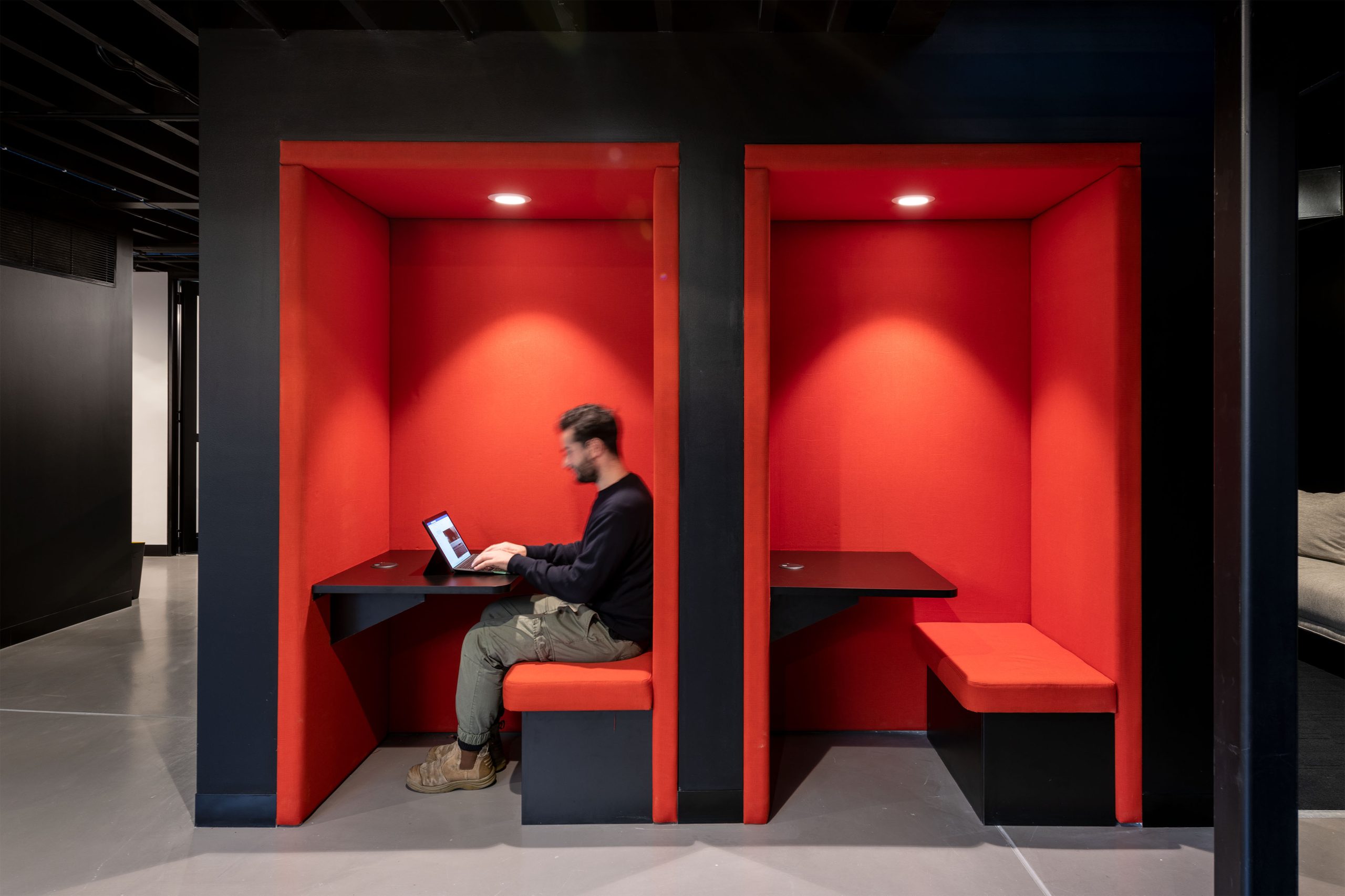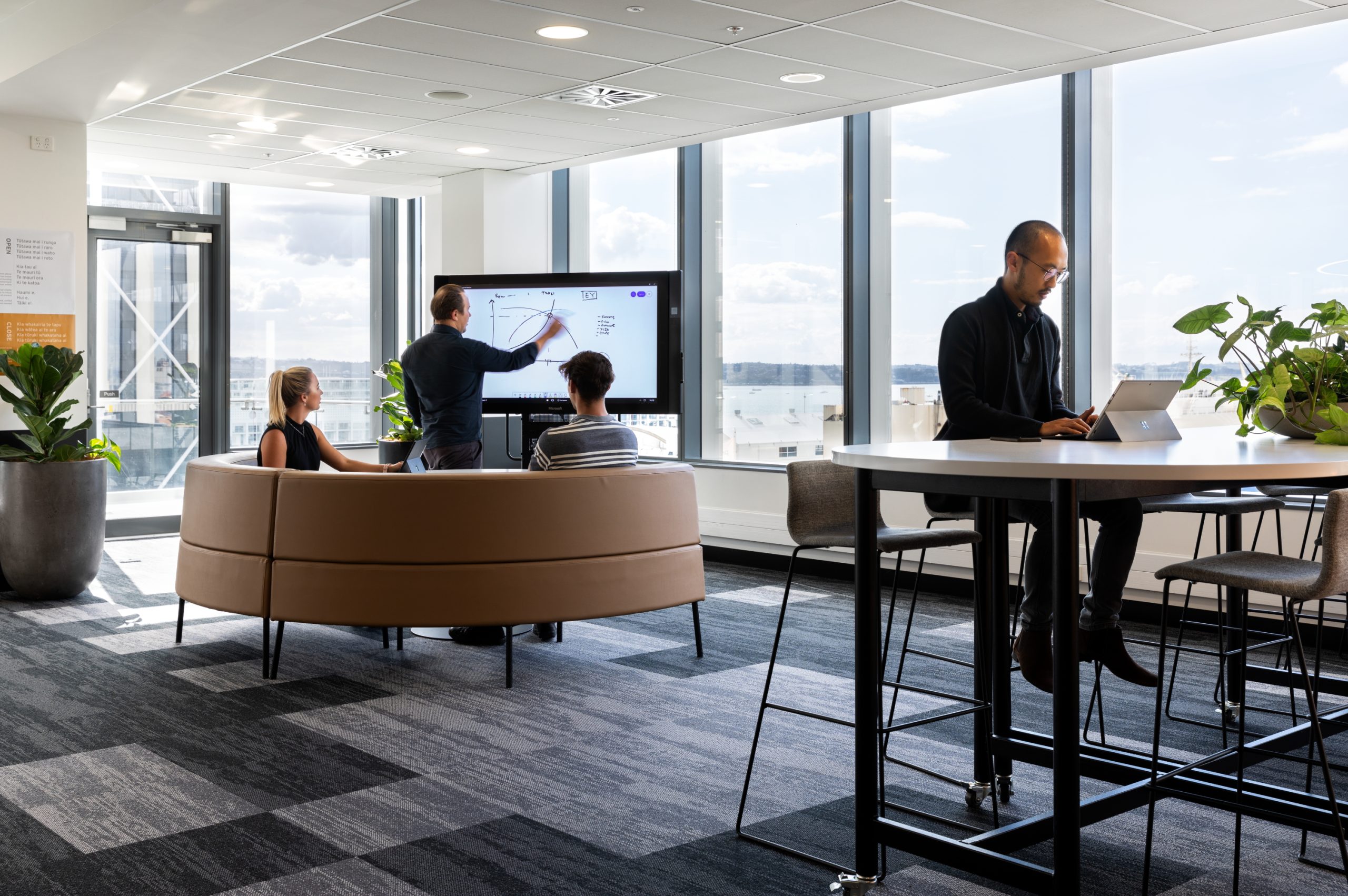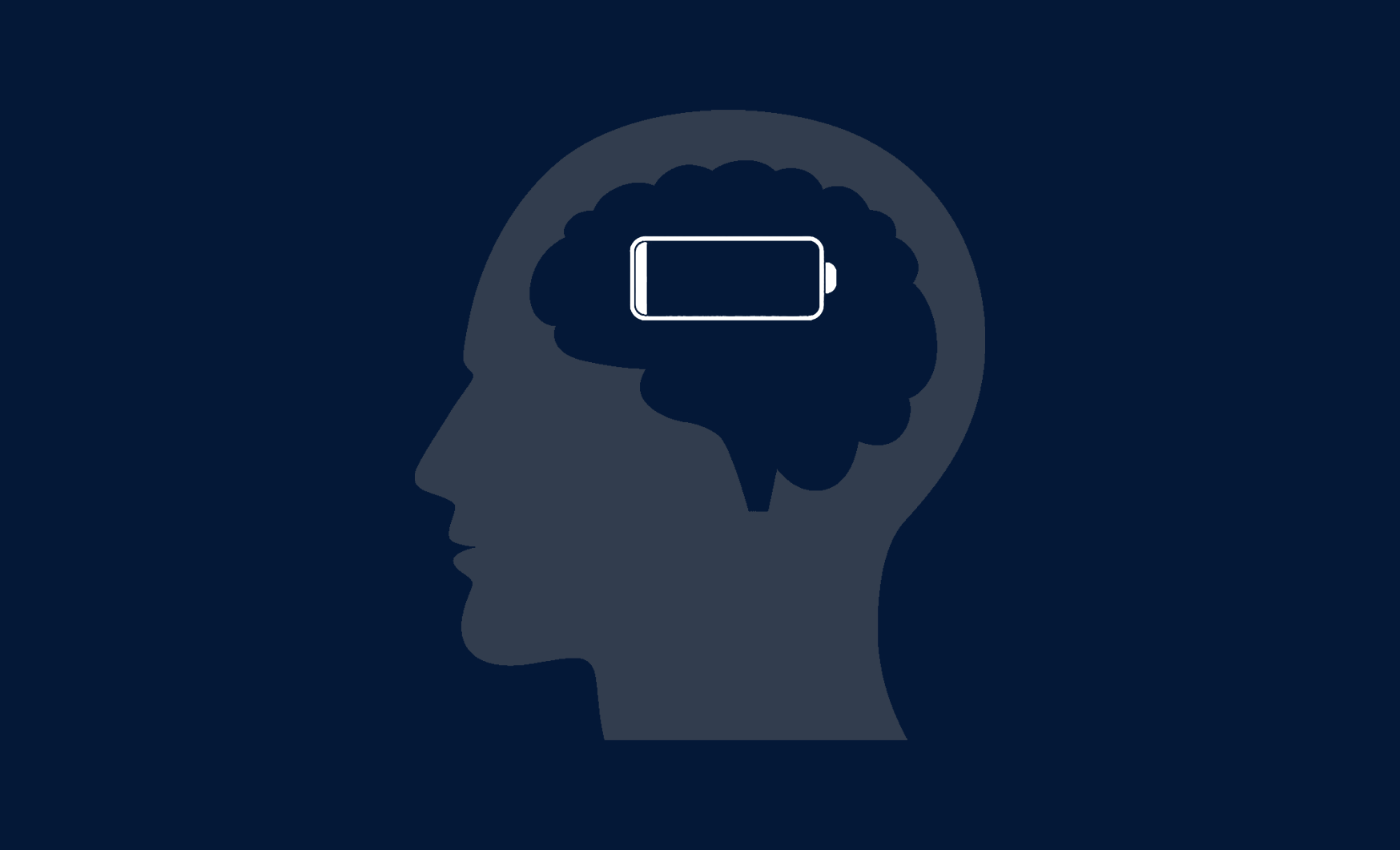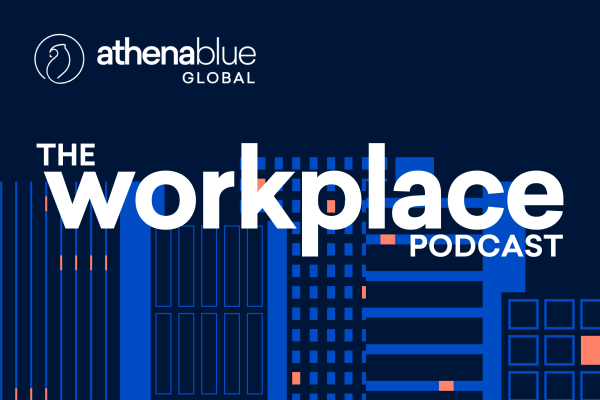An employee sits down at their desk, determined to focus on a critical report. They start reviewing the relevant project information – meeting notes, spreadsheets and documents. Soon, their email inbox chimes with messages flagged as ‘urgent’, their phone buzzes with notifications, and a colleague stops by with a ‘quick question’ that turns into a 15-minute conversation. Meanwhile, their mind keeps circling back to yesterday’s stressful meeting … When they finally get a moment to return to the report, they feel scattered and disoriented. Now, the simple task of organising their ideas feels overwhelming. And the day has only just begun.
Many employees experience similar juggling acts each day as they try to manage their workloads while staying informed and connected. However, they may or may not realise that with every new piece of information they consume, with every question they answer, and with every act of switching their attention, they chip away their mental resources. Thinking consumes a large amount of energy, and the brain only has a finite supply available. If much of our mental energy is spent on dealing with distractions and irrelevant information, only we have only a small amount left for work that matters.
This is why, in today’s hyperconnected and information-saturated work environment, cognitive load management is becoming an increasingly important skill. (In 2020, the Institute for the Future listed cognitive load management among the 10 most important future work skills.)
Employees can only work effectively if they are
- Able to focus on what’s truly important
- Work in ways that preserve their mental resources and
- Give their bodies and brains what they need for healthy functioning.
To achieve breakthroughs, this complex challenge needs to be addressed from multiple angles – by encouraging and supporting individual work habits, designing physical environments, and implementing organisational practices that help optimise brain function while minimising employees’ cognitive burden.
01 – Reducing Mental Demand
In the modern workplace, information floods in from multiple channels – work documents emails, calls, instant messages and social media – creating a constant stream of data that the brain needs to process. This cognitive burden is further amplified by countless decisions employees face daily, from prioritising tasks to addressing challenges and setbacks. Frequent interruptions, distractions and task switching only make the situation worse. Add the internal world of discomforts, emotions and inner dialogues, and it’s clear why many employees feel mentally overwhelmed.
Individual habits and choices
Managing cognitive load begins with individual habits around planning ahead and approaching tasks in a structured manner. Many employees find it easier to work productively by batching similar tasks, for example, setting separate time blocks for analytical work, emails, or team communications. The practice of single-tasking – focusing on one activity at a time – is particularly effective in reducing cognitive strain. This might involve turning off notifications, or refraining from checking emails or answering phone calls, during periods of focused work. Some people choose to boost their focus by using specific spaces or devices for specific activities, training their minds to associate each task with its environment and reducing the temptation to procrastinate or multitask.
Workplace design strategies

Workplace design plays an important role in reducing cognitive load. By providing separate zones for quiet and dynamic activities and supporting acoustic and visual comfort, a strategically designed office space can significantly reduce distractions and interruptions in focused work areas. Providing a variety of work settings – from quiet pods for deep work to collaborative areas for team interactions – allows employees to choose spaces that best suit their tasks and needs
While too much stimulation can add to cognitive load, it’s important to recognise that too little stimulation has its own downsides. People’s perceptions vary widely regarding what environment they find too busy or too sterile, and in a diversified workplace everyone has the opportunity to find a spot that feels just right.
Organisational approaches
To support employees in managing their cognitive load, organisations need to embrace different working styles and preferences. Leaders also need to recognise that certain habits that might may appear counterproductive on a first glance can allow individuals to work most effectively – for example, using the same desk day after day, ignoring calls and messages for periods of time, or working in a personalised and somewhat cluttered environment. To help people develop work habits and practices that help them perform to their potential, training and coaching programs can be highly beneficial.
02 – Optimising Mental Processing

Thinking is an intricate biological process that involves not only the brain but the entire human body. When we align our work with our work styles and biological rhythms, maintain our physical and emotional wellbeing, and tap into our body’s innate intelligence, we find our thinking flows effortlessly and we use mental energy efficiently.
In contrast, when we ignore our body’s natural processes and rhythms, succumb to discomfort or stress, or we approach thinking as a purely mental task, information processing becomes laborious and our energy resources deplete rapidly.
Individual habits and choices
Employees have many tricks at their disposal to make information processing a less demanding task. They may use visual aids and physical tools – such as mind maps, sticky notes or whiteboard sketches – to engage their visual and spatial memory. By taking hand-written notes during meetings or learning sessions, instead of typing or relying on automated notetaking, they can make it easier to remember what’s been discussed. They may incorporate physical movement into their work routines to increase blood flow and oxygen to the brain – for example, by participating in walking meetings or using standing desks. They can make a conscious effort to maintain a positive emotional state, as positive emotions are shown to boost learning, information processing, and problem solving. Finally, they can more easily get into the zone by aligning their tasks with their natural body clock – which means tackling demanding work when they are most alert and save routine tasks for lower-energy periods.
Workplace design strategies
Beyond providing user-friendly and effective digital technologies, workplaces should also facilitate the use of tactile tools to help ease cognitive load. The work environment should invite employees to engage their hands and bodies, and to utilise their visual and spatial memories, in the way they carry out their work.

Flexible furniture and seamless technology integration are other important features of the modern workplace, enabling people to easily adapt or change their workspaces to suit their tasks and needs throughout the day. Thoughtful design can also support positive emotional experiences by facilitating socialising and play, and by catering for basic human needs such as privacy, a sense of control, and a sense of belonging.
Organisational approaches
To bring out the best in their people, organisations may need redefine what productive work looks like, moving beyond the traditional notion that employees create the most value while sitting at a desk. Leaders also need to recognise that people’s chronotypes vary – meaning some individuals focus best on challenging tasks in the morning, while others reach their peak mental state in the evening – and offer people the flexibility to schedule their tasks in alignment with their natural rhythms.
03 – Supporting Brain Health
The brain’s capacity to manage cognitive load relies on its overall health and wellbeing. For this complex organ to function at its best, the body requires fresh air, proper nourishment, regular physical movement, and adequate rest. Psychological safety and social connections also play crucial roles in brain function, as feeling secure and supported frees up cognitive resources for productive work instead of handling stress and worry. Quality sleep – which is often influenced by work-related experiences and habits – also forms a vital foundation for cognitive function.
Individual habits and choices

Maintaining brain health starts with intentional daily lifestyle choices and habits, such as eating well, staying hydrated, exercising regularly, engaging in activities that promote mental health, and practising sleep hygiene. Effective employees also tend to take regular, restorative breaks during the workday, allowing their brains and bodies to recharge after periods of intense focus and information processing.
It’s important to recognise that not all activities that offer some form of entertainment or reward are truly restorative. While browsing the internet or engaging with social media might seem like an easy way to ‘switch off’, these activities can in fact add to cognitive load. On the other hand, preparing a healthy meal, listening to music, going for an unplugged walk, meditating, or socialising with colleagues during breaks are more likely to leave people refreshed.
Workplace design strategies
A healthy and human-centred workplace – offering ample fresh air, natural light, quality outdoor views, and easy-to-access hydration points – can make a significant difference to employees’ brain health. Biophilic features such as indoor plants, natural materials, colours and patterns, can further enhance wellbeing and mental health, and in turn, support cognitive function. To optimise human performance, workplaces also need to be thoughtfully designed to encourage and support restorative activities while discouraging energy-draining behaviours. Design elements such as sit-stand desks, attractive stairways and walking paths can also help stimulate brain function by encouraging physical activity throughout the day.
Organisational approaches
In addition to creating a healthy physical environment, organisations have many opportunities to support employees’ brain health – from providing healthy food options to offering gym memberships, lunchtime exercise classes, meditation programs or sleep hygiene education. To promote self-care practices, leaders also need to ensure workplace policies allow and encourage employees to take adequate rest, and recognise the value of time spent building social connections and communities.
The way forward
To enhance employees’ wellbeing and overall performance, organisations need to actively support cognitive load management through holistic strategies that combine individual empowerment, thoughtful design, and supportive organisational practices.
By helping employees manage cognitive load, workplaces can become not only places of productivity but environments that foster clarity, resilience, and sustained wellbeing in a world of constant demands.





